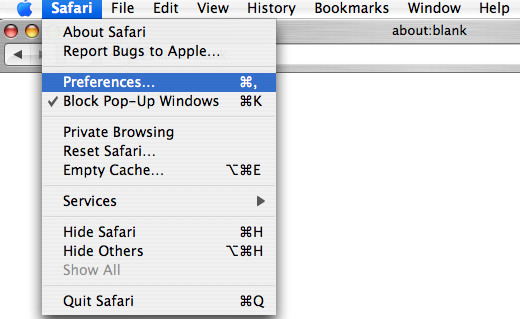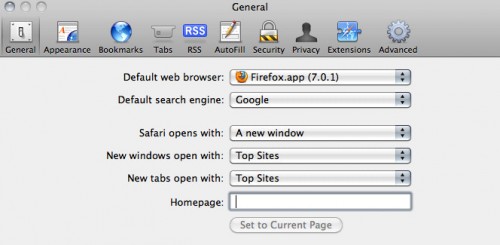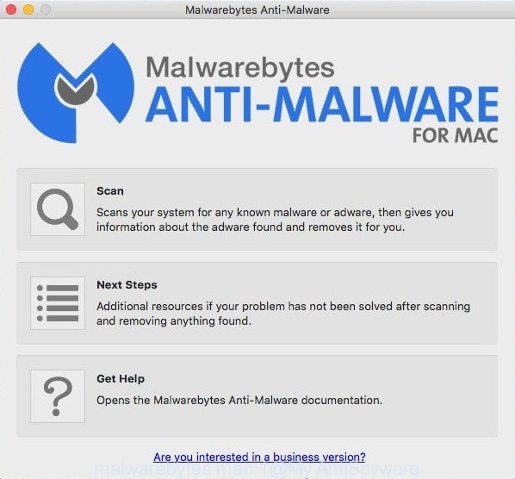If you’re reading this post, it means that your antivirus detects the Trojan.MAC.SpyAgent.C threat. It indicates that your system is infected with malicious software, which is often installs on the system with free applications. You probably want to know how to get rid of any security threats as well as remove Trojan.MAC.SpyAgent.C virus. In the steps below we will tell you about how to solve your problems.
If you still are not sure that your system is affected with malware, then check your system for the common symptoms of this infection:
- your internet browser displays advertisements where previously you have never seen;
- IE, Microsoft Edge, Chrome and Mozilla Firefox shows a large number of intrusive advertisements;
- internet browser settings such as home page and search provider are hijacked;
- your antivirus software detects an infection;
- Internet connection may be slow.
While the Trojan.MAC.SpyAgent.C virus is active, you won’t be able to return your machine settings. But this does not mean that you should just ignore it or get along with this fact. Because this is not the best option, due to the Trojan.MAC.SpyAgent.C you can have problems with your personal computer and browsers, unwanted ads and even confidential data theft.
We strongly suggest that you perform the few simple steps below that will help you to remove Trojan.MAC.SpyAgent.C virus using the standard features of Windows and some proven free applications.
Remove Trojan.MAC.SpyAgent.C (removal steps)
There present several free threat removal utilities. Also it is possible to delete Trojan.MAC.SpyAgent.C manually. But we recommend to combine all these methods below into the one removal algorithm. Follow the steps of the guide. Read it once, after doing so, please print this page as you may need to shut down your browser or restart your MAC system.
To remove Trojan.MAC.SpyAgent.C, execute the following steps:
- How to get rid of Trojan.MAC.SpyAgent.C virus without any software
- How to remove Trojan.MAC.SpyAgent.C security threat with freeware
- How to stay safe online
- Finish words
How to get rid of Trojan.MAC.SpyAgent.C virus without any software
The few simple steps will help you remove Trojan.MAC.SpyAgent.C security threat. These Trojan.MAC.SpyAgent.C removal steps work for the Google Chrome, Mozilla Firefox and Safari, as well as every version of operating system.
Delete potentially unwanted applications using th Finder
In order to get rid of unwanted software, open the Finder and click on “Applications”. Check the list of installed apps. For the ones you do not know, run an Internet search to see if they are security threat, hijacker infection or potentially unwanted software. If yes, remove them off. Even if they are just a applications which you do not use, then removing them off will increase your machine start up time and speed dramatically.

- Open the Finder.
- Click “Applications”.
- It will open a list of all apps installed on the machine.
- Scroll through the all list, and delete questionable and unknown apps. Pay maximum attention to the application you installed last.
- Drag the dubious program from the Applications folder to the Trash.
- Empty Trash.
Remove Trojan.MAC.SpyAgent.C from Mozilla Firefox
Resetting Firefox internet browser will reset all the settings to their default values and will remove changes created by Trojan.MAC.SpyAgent.C virus and disable malicious extensions. It will save your personal information like saved passwords, bookmarks, auto-fill data and open tabs.
Run the Firefox and press the menu button (it looks like three stacked lines) at the top right of the internet browser screen. Next, click the question-mark icon at the bottom of the drop-down menu. It will show the slide-out menu.

Select the “Troubleshooting information”. If you are unable to access the Help menu, then type “about:support” in your address bar and press Enter. It bring up the “Troubleshooting Information” page as displayed in the figure below.

Click the “Refresh Firefox” button at the top right of the Troubleshooting Information page. Select “Refresh Firefox” in the confirmation dialog box. The Mozilla Firefox will begin a task to fix your problems that caused by the Trojan.MAC.SpyAgent.C security threat. When, it’s complete, press the “Finish” button.
Remove Trojan.MAC.SpyAgent.C virus from Chrome
Another solution to remove Trojan.MAC.SpyAgent.C virus from Chrome is Reset Chrome settings. This will disable malicious plugins and reset Chrome settings to default state. However, your saved bookmarks and passwords will not be lost. This will not affect your history, passwords, bookmarks, and other saved data.
First run the Chrome. Next, click the button in the form of three horizontal dots (![]() ).
).
It will open the Google Chrome menu. Choose More Tools, then click Extensions. Carefully browse through the list of installed extensions. If the list has the add-on signed with “Installed by enterprise policy” or “Installed by your administrator”, then complete the following instructions: Remove Google Chrome extensions installed by enterprise policy.
Open the Google Chrome menu once again. Further, click the option named “Settings”.

The web browser will show the settings screen. Another way to display the Chrome’s settings – type chrome://settings in the browser adress bar and press Enter
Scroll down to the bottom of the page and click the “Advanced” link. Now scroll down until the “Reset” section is visible, as displayed in the following example and click the “Reset settings to their original defaults” button.

The Google Chrome will display the confirmation dialog box as displayed in the figure below.

You need to confirm your action, press the “Reset” button. The web-browser will run the task of cleaning. After it is finished, the web-browser’s settings including default search provider, start page and new tab page back to the values that have been when the Chrome was first installed on your Apple Mac.
Delete Trojan.MAC.SpyAgent.C from Safari
By resetting Safari browser you restore your browser settings to its default state. This is basic when troubleshooting problems that might have been caused by the Trojan.MAC.SpyAgent.C virus.
Click Safari menu and choose “Preferences”.

It will open the Safari Preferences window. Next, click the “Extensions” tab. Look for unknown and suspicious extensions on left panel, select it, then click the “Uninstall” button. Most important to remove all unknown extensions from Safari.
Once complete, click “General” tab. Change the “Default Search Engine” to Google.

Find the “Homepage” and type into textfield “https://www.google.com”.
How to remove Trojan.MAC.SpyAgent.C security threat with freeware
Manual removal instructions does not always help to completely get rid of the security threat, as it’s not easy to identify and remove components of security threat and all malicious files from hard disk. Therefore, it’s recommended that you use malicious software removal utility to completely remove Trojan.MAC.SpyAgent.C off your Apple Mac. Several free malware removal utilities are currently available that can be used against the virus. The optimum way would be to run MalwareBytes AntiMalware.
Remove Trojan.MAC.SpyAgent.C virus with MalwareBytes
We suggest using the MalwareBytes Free. You may download and install MalwareBytes Anti-Malware to find out adware and thereby remove Trojan.MAC.SpyAgent.C from your system and web-browsers. When installed and updated, the free malware remover will automatically check and detect all threats present on the MAC system.
MalwareBytes Free can be downloaded from the following link.
20945 downloads
Author: Malwarebytes
Category: Security tools
Update: September 10, 2020
Once the downloading process is complete, close all software and windows on your computer. Run the saved file. Follow the prompts.
The MalwareBytes Anti Malware (MBAM) will automatically start and you can see its main screen as displayed on the image below.

Now click the “Scan” button to perform a system scan with this utility for the Trojan.MAC.SpyAgent.C virus that can give a remote malicious hacker access to your Apple Mac. While the MalwareBytes program is checking, you can see how many objects it has identified as threat.

When the scan get completed, MalwareBytes AntiMalware (MBAM) will display a scan report. Review the results once the tool has finished the system scan. If you think an entry should not be quarantined, then uncheck it. Otherwise, simply press “Remove Selected Items” button. The MalwareBytes Anti Malware will remove Trojan.MAC.SpyAgent.C virus that can send information about your MAC to a remote malicious hacker and move items to the program’s quarantine.
How to stay safe online
Use ad-blocker application like AdGuard in order to block advertisements, malvertisements, pop-ups and online trackers, avoid having to install harmful and adware browser plug-ins and add-ons that affect your Apple Mac performance and impact your MAC OS security. Browse the Web anonymously and stay safe online!

AdGuard can be downloaded from the following link.
3754 downloads
Author: © Adguard
Category: Security tools
Update: January 17, 2018
When the download is complete, run the downloaded file. The “Setup Wizard” window will show up on the computer screen.
Follow the prompts. AdGuard will then be installed. A window will show up asking you to confirm that you want to see a quick guidance. Press “Skip” button to close the window and use the default settings, or press “Get Started” to see an quick guidance that will allow you get to know AdGuard better.
Each time, when you launch your MAC system, AdGuard will run automatically and block unwanted unwanted pop up ads, as well as other malicious or misleading web sites.
Finish words
Now your MAC OS should be clean of the Trojan.MAC.SpyAgent.C threat that can redirect your web-browser to various annoying pages. We suggest that you keep AdGuard (to help you stop unwanted popups and unwanted harmful web sites) and MalwareBytes (to periodically scan your MAC system for new threats and other malicious software).
If you are still having problems while trying to get rid of Trojan.MAC.SpyAgent.C virus from the Safari, Google Chrome and Mozilla Firefox, then ask for help here here.

















